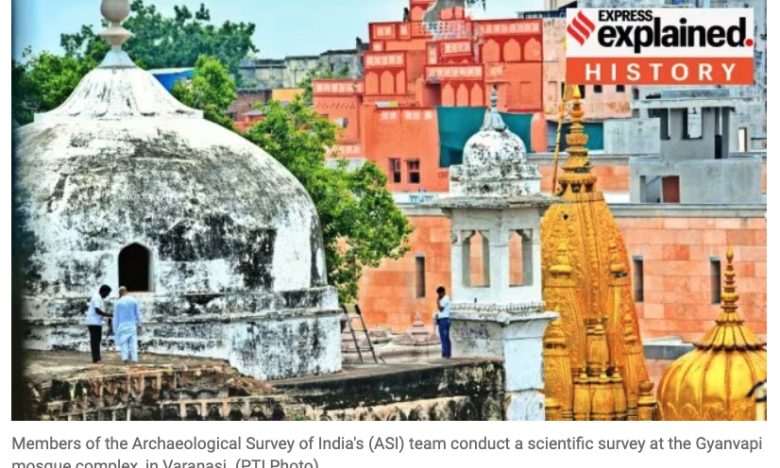INDIA, January 27, 2024 (Indian Express): A central chamber “tastefully decorated with carvings of animals and birds,” pillars with “lotus medallion” and “flower bud chains,” a “large decorated entrance gateway” on the wall of one of the chambers — these, according to the Archaeological Survey of India (ASI), formed part of “a large Hindu temple” that existed at the site in Varanasi where the Gyanvapi mosque now stands. In a report on its scientific survey of the mosque complex – it’s in four volumes – the ASI, tasked by the Varanasi district court to ascertain whether the mosque was “constructed over a pre-existing structure of a Hindu temple”, has concluded just that, and describes a temple that existed before it “appears to have been destroyed in the 17th century, during the reign of Aurangzeb and part of it… modified and reused in the existing structure”.
The ASI report, made public Thursday after its copies were handed over to Hindu and Muslim litigants by the court, in the section titled “Reply to Observations of the Court,” stated: “Based on the studies carried out, observations made on the existing structures, exposed features, and artifacts studied, it can be concluded that there existed a large Hindu temple prior to the construction of the existing structure.” “This temple had a big central chamber and based on the study of the existing structures and available evidence it can be concluded that it had at least one chamber to the north, south, east and west respectively,” it stated.“Remains of three chambers to the north, south and west can still be seen but the remains of the chamber to the east and any further extension of it cannot be ascertained physically as the area to the east is covered under (a) solid functional platform with stone flooring,” it stated.
Much more at source.
https://indianexpress.com/article/india/chambers-carvings-decorations-asi-describes-temple-that-was-9129734/
see also: https://organiser.org/2024/01/27/218622/bharat/asi-report-in-pictures-50-artefacts-and-images-showing-there-existed-grand-mandir-before-the-disputed-structure/
A daily summary of world news for Hindus and non-Hindus alike

